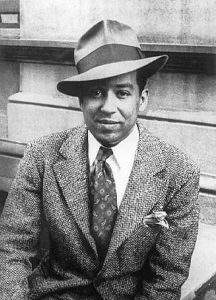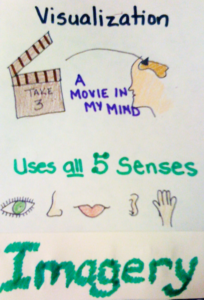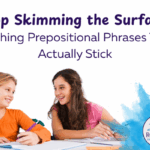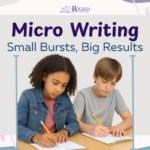** Contact us if you would like Rogers Education Consulting to bring an engaging, hands-on poetry session to your campus **
 I have three poems that I absolutely love introducing to students. One of those poems is Harlem by Langston Hughes. I love it because it is fun to read out loud and the students love it!
I have three poems that I absolutely love introducing to students. One of those poems is Harlem by Langston Hughes. I love it because it is fun to read out loud and the students love it!
Poetry is one of those genres that teachers seem to either love or hate. Whether National Poetry Month strikes fear in your heart or causes you to jump up and down with glee, we still have to teach poetry. If you want new, practical engaging ways to do so, with plenty of ready-to-go lessons, ask me about For the Love of Poetry, one of my most popular professional development sessions!
In honor of National Poetry Month, I want to share some of my favorite poems and how I like to teach them with you throughout the month. I usually take a whole week to really get into the poem, to learn and apply reading strategies, as well as make cross-curricular connections! There are probably lots of other things we could do with this poem, but here are the activities I usually follow:
Before Reading: Before giving students the poem, I activate students’ schema. Before this poem, we discuss what the word deferred means. Then I begin to question what dreams they have now and what dreams they’ve had in the past. I always come armed with examples from my own life, as well as from my three boys at home, to help keep the conversation going. We share the serious and the silly! I share that when I was little my dream was to be an Olympic athlete. The dream was deferred, or put off, due to an early injury. Once every student has at least one dream, we discuss whether it is important to always follow through with dreams, or if it’s okay to let some go. We discuss how the dream makes us feel when it is “active” and how it feels when you have to postpone the dream. Many times the conversation will take on a life of its own, which is great. I have older students write their thoughts about the dreams they have and how they feel in their journals. This CAN take your whole time on Monday. It’s okay, we will use the poem all week!
During: No matter what grade the students are in, I set up a shared read with poetry. Shared reading is so important for fluency and  enjoyment of poems. I read the poem first. While I’m reading, I point to the words being read as students read along. We will read the poem many times over, so each time you can ask for something different. You can ask students to pay attention to different parts of the poem and they can read it silently, with a buddy, in a choral read, or an echo read. This is a great time to teach the elements of poetry. In this example, you could teach similes and free verse.
enjoyment of poems. I read the poem first. While I’m reading, I point to the words being read as students read along. We will read the poem many times over, so each time you can ask for something different. You can ask students to pay attention to different parts of the poem and they can read it silently, with a buddy, in a choral read, or an echo read. This is a great time to teach the elements of poetry. In this example, you could teach similes and free verse.
With this poem, I love to teach the visualization reading strategy the most. Hughes employs every sense in this poem and it is so vivid! After reading the poem a couple of times, I read each line and visualize for the students what I’m sensing. I never stop my explanation at what I hear but pull it further into how that makes me feel and how is it affecting the tone of the poem. After modeling a few lines, have the students visualize the other stanzas on their own. Take time and guide the discussion to include word choice, the imagery created, and the message being shared. (You can use this handy visualization graphic organizer!)
After: Ask students what the author’s message is about “dreams deferred.” How does this match the dreams we shared before we began reading? Spend plenty of time discussing the meaning of the poem and the emotions that are shared. Students should now be using another reading strategy: making connections. At this point, students will connect the author’s thoughts with their own thoughts and this should be reflected upon in more journal writing. The writing can be as formal or informal as you like. I personally like the students to share the meaning of the poem and then share how this is the same or different from how they feel.
Students can also write a sensory poem of their own. (Check out this template for a sensory poem.)
Connecting to Social Studies: I like that students can really get into this poem and understand it on a basic human level (the idea of dreams), before bringing in time periods they struggle to relate to. So, if you like, bring in the time period in which this poem was written. Have students research more about Langston Hughes. Who was he? What was his life like? What was going on while he was writing poetry? Discuss with students the social injustice of the time period, give a timeline of the Harlem Renaissance, and ask again about the meaning of the poem. End with a final deep thinking question, like: “What poem defines your community?” or “How does art define a time?”
How have you or will you use this poem in your class?


